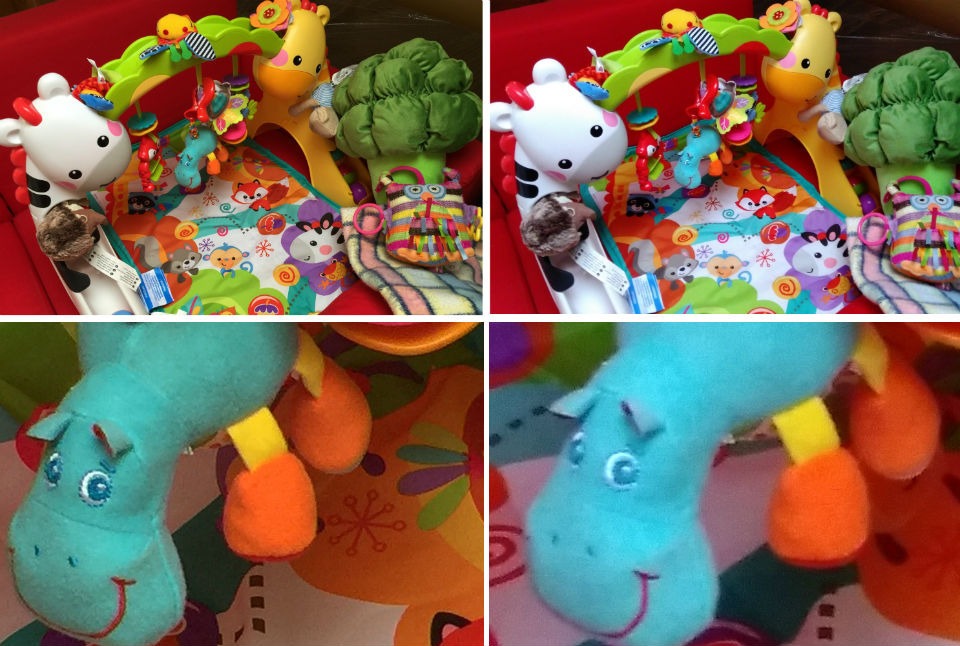
The pressure-sensitive screen (3D Touch in Apple-speak) is fast becoming standard in Android smartphones. We’ve recently reviewed the high-end and quite expensive Huawei Mate S that has such a screen, and rumors have it that the next Samsung Galaxy flagship will feature it as well.
So what does ZTE’s Axon mini (Premium Edition) — the only sub-$400 phone out there to feature a pressure-sensitive screen — bring to the table?
Well, besides showering you with tech you’re not used to seeing in midrange phones, it’s a solid Android device, but a number of little quirks and imperfections mar the experience somewhat.
A lot of bang for the buck
After years of trailing behind the smartphone giants from Korea, Chinese manufacturers these days bring it not only in terms of specs, but also new technologies, their phones being almost too crammed with features.
ZTE Axon mini is no exception. It has a pressure-sensitive screen, a fingerprint scanner, an eye scanner and a voice scanner, all of which you can use to secure the device. That’s a lot of security features, though the implementation is sometimes lacking — we’ll get to that bit later.
Pure specifications-wise, the phone is solid: It has a 5.2-inch, full HD screen, 3GB of RAM, 32GB of storage (expandable with microSD cards up to 128GB in size), a 13-megapixel back camera and an 8-megapixel selfie cam, and a 2,800mAh battery.
Also of note is the “audiophile-level” 192kHz/32bit AK4961 audio chip from Asahi Kasei Microdevices, coupled with dual microphones, which — in theory — offers superior sound reproduction and recording quality compared to most smartphones.
A couple of things drag the Axon mini into midrange territory, mainly the octa-core, 1.5GHz Qualcomm Snapdragon 616 processor — a decent but not top-notch chip — and the use of Android 5.1 Lollipop.

Image: Stan Schroeder/Mashable
On the design front, even though the phone’s body is made out of a “Boeing 787 aviation standard high-strength aluminum titanium alloy” with a faux-leather on the back’s top and bottom, it just doesn’t feel as premium as some of the top smartphones I’ve held. ZTE boasts a “2.5D” curved screen, but the curvature at the edges is barely noticeable.
It’s hard to be objective about a smartphone’s design these days — after all, they’re all mostly slabs of metal with a big screen on the front — so it’s quite possible someone else would have a different impression. To me, the ZTE Axon mini looks good, but not amazing.
It’s all about the experience
As I’ve noted in my Huawei Mate S review — which, being the only other Android with a pressure-sensitive screen right now, will inevitably be compared with the ZTE Axon mini — merely listing the specs of an Android phone nowadays tells you very little. It’s the little things that make the difference: Does everything work out of the box, or does it require some fiddling? Is it stable, long-term? How much bloatware is pre-installed?
Thankfully, the Axon mini does not go overboard with pre-installed apps. Its MiFavor UI 3.2 user interface, slapped on top of Android 5.1 Lollipop, is mostly unobtrusive, though users will have to get used to the lack of an app drawer — all apps are scattered across the screen and in folders, just like on iOS. I uninstalled a few apps I definitely did not need, installed the 20-or-so apps that I regularly use, and I was on my way.
Where ZTE Axon mini stumbles somewhat is the execution of its multitude of features. Don’t get me wrong: Everything works, but it might take you a little time to get there.

Image: Stan Schroeder/Mashable
For example, the fingerprint scanner only read my finger correctly one out of three or so times, even though I went through the setup process twice. I eventually figured out the angle at which I needed to press my finger against it, but in the end, typing in my PIN code to unlock the smartphone was an easier option.
As far as the pressure-sensitive screen goes, it can be used to access additional menus for most of the phone’s pre-installed apps, weighing things with a scale app, setting up a 3D password (which registers not only the numbers and letters, but also the force you apply to each symbol) or even catch fish in an animated screensaver.
However, the pressure sensor did not always correctly catch my intention, even after some calibration. After a while, I adjusted the way I pressed on the screen and things got better, but never perfect. I had other issues with the screen — for example, I often couldn’t get the multi-touch zoom on photos to work correctly; it stuttered, and instead of zooming in, the gallery app would sometimes switch to a different photo.
I’ve tested ZTE’s eye-scanning technology at this year’s Mobile World Congress in Barcelona, and while it worked as advertised, I wasn’t sure it was the greatest or the fastest way to unlock your device. On the Axon mini, the feature is called Sky eye, and it can only be used to access private spaces or locked apps, but not to unlock the phone. Suffice to say you won’t be using this one too much.
Finally, the occasional misspelling in a system menu or just plain odd behavior were reminders that the Axon mini simply lacks some polish.
Sights and sounds
Quick: How excited are you when you hear the words “13-megapixel camera?” I thought so. These days, practically every Android smartphone has one, and most produce decent photos, though in my view, none of them are as good as the iPhone’s camera.
So instead of fiddling with a Axon mini’s zillion camera features, I focused on two things: How fast it is, and how well does it take photos in low-light conditions.
The Axon mini fares good but not great on both counts. In sunlight, photos are great and snapping them takes a fraction of a second. In low light, the phone will often warn you not to move it for a second or two, as the photo is still being taken, and even if you oblige that, the photos will sometimes be blurry.
When you do manage to snap a sharp photo in a poorly lit room, the colors will be pretty true to reality, but — as you can see in the comparison below — the level of detail will be far below what you get on an iPhone 6 (the iPhone is on the left, the Axon mini on the right).

Image: Stan Schroeder/Mashable
I used the Axon mini to snap some seaside photos in near-perfect conditions, as well as some dark, Christmassy ones, two of which you can see below. All in all, the camera did not disappoint, but it was nothing special.

Image: Stan Schroeder/Mashable
Lastly, I had to test Axon mini’s audio capabilities. I whipped out my trusty old Creative Labs Aurvana Live headphones — still the best pair I own, despite being the cheapest — and chilled out with John Coltrane’s A Love Supreme, Wilco’s Yankee Hotel Foxtrot, Fink’s Perfect Darkness and Thome Yorke’s The Eraser. While all four recordings sounded great (Coltrane and Fink were MP3s, Wilco and Yorke were FLAC), it’s hard to tell how great without a direct comparison.
So, I compared the same music with an iPhone 6 (whose audio capabilities we thoroughly tested) and even a MacBook and, as expected, with the same headphones I simply could not hear the difference. That does not mean it doesn’t exist, but unless you’re an audiophile with some serious equipment, you probably don’t need to worry about the audio chip in your smartphone.
The pressure is on
The ZTE Axon mini Premium Edition is an odd beast. It has a lot of premium features, but its processor drags it down. With a 5.2-inch screen and a “mini” moniker, it definitely feels like a weaker, smaller version of the ZTE Axon Pro — but then again, it has a pressure-sensitive screen, and the Pro doesn’t.
Still, most of ZTE Axon mini Premium Edition’s advanced features left me cold. The “3D touch” screen is nice, but I nearly never used it. The fingerprint scanner was shoddy. I never had the need to use Sky eye. So what we’re left it is a solid, but not a spectacular midrange phone, with some minor issues and a lot of cool tech you won’t really use except to impress your friends.
That means the price will be by and far the deciding factor here, and the ZTE Axon mini does not disappoint. The phone can be had for about $389 from AliExpress — a well-known Chinese site that ships worldwide. Compare that to the Huawei Mate S, whose cheapest variant with pressure-sensing tech costs about $785, and you got yourself a bargain.
ZTE Axon mini
The Good
A lot of fancy new tech • Affordable • Solid overall specs
The Bad
Lukewarm design • Lacks polish • Weak processor • Flaky fingerprint sensor and eye scanner
The Bottom Line
The ZTE Axon mini Premium Edition is the only affordable choice if you desire an Android with a pressure-sensing screen, but you’ll have to live with its imperfections.